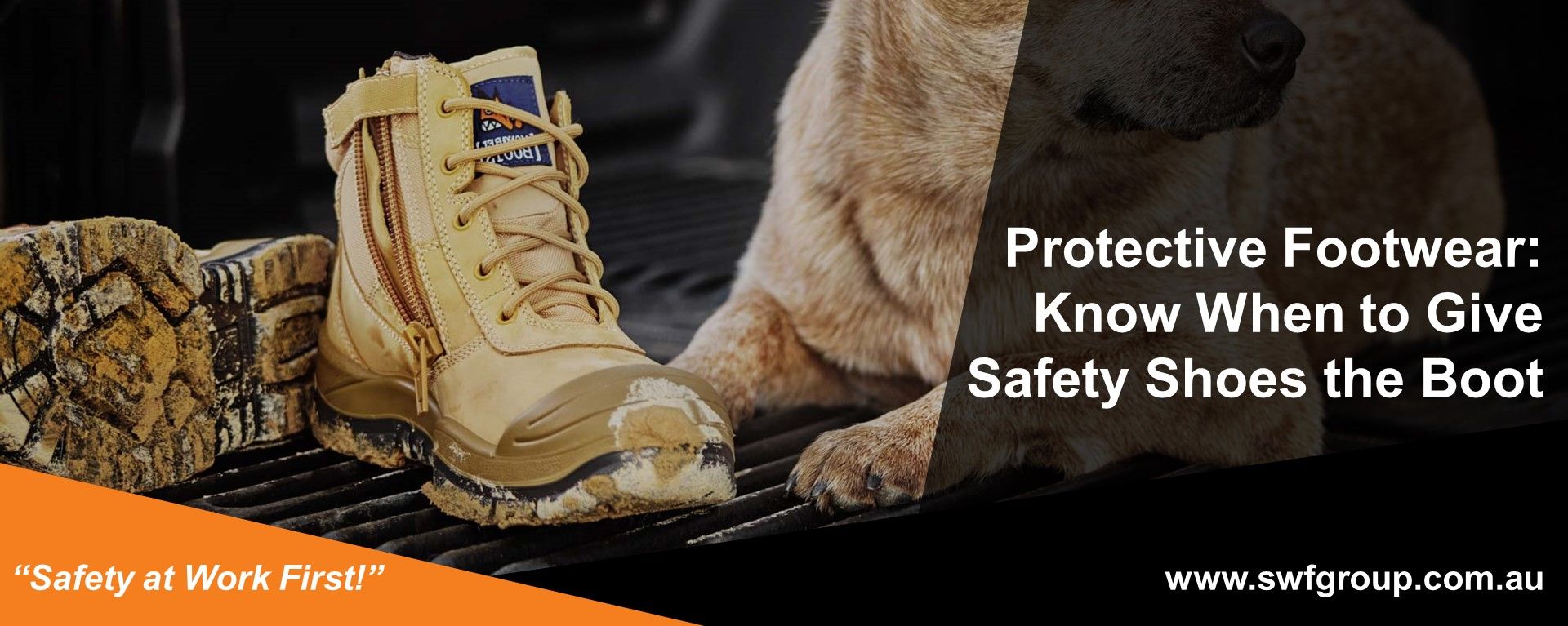
Protective Footwear: Know When to Give Safety Shoes the Boot
Safety shoes are a vital piece of PPE, offering the last line of defense against the crushing weight of heavy objects or the hazards of dangerous chemicals. Are your workers' shoes still protecting them?
We’ve all had that pair of shoes that we kept long after they should have been tossed in the garbage, but what about safety footwear? When do you need to replace it?
It turns out there’s no magic formula – no best before date on the shoes, but there are several signs such as physical wear and tear, comfort, and damage that will help you decide when it’s time to pick up a new pair of Safety Boots:
1. Wear & Tear
Can you see the steel toe shining through? Is the heel plate rubbed bare? Is your metatarsal guard showing? If you can answer ‘yes’ to any of these questions, it’s time for a new pair. The same goes for the tread on the bottom – if it’s worn down significantly or rubbed smooth, it isn’t doing its job anymore. Think of it like the tread on your tires – you don’t want to be driving on bald tires, so why walk in shoes that don’t have traction anymore? Another thing to check is the places where materials meet – if the rubber or pvc is separating from the leather, it’s time for a new pair.
2. Function
Safety footwear is exactly what it says it is – footwear worn to protect your feet from injury and to protect you from slipping and falling. If there’s a chance that your footwear can no longer perform that function, you need to get a new pair.
3. Mileage & Comfort
This is a bit trickier – and depends on how much walking and standing you do, but if your feet are hurting you should be thinking about replacing either your insole, or if that doesn’t work, your safety shoe. There’s no set mileage for when to replace your safety footwear, but shoes and boots start to show wear and tear somewhere around the 1500km mark under average usage – which is about one year of daily wear.
4. Damage
This one is really simple – if something falls onto your safety footwear, it needs to be replaced. With steel toed boots, this is fairly easy to see because the steel dents inwards; however with composite materials, the structural integrity can be damaged without any outward signs so it’s recommended that safety footwear be replaced after a puncture or if something lands on it.
At SWF Group we are committed to keeping your feet protected by providing you with the right Safety Footwear for any work environment. We stock a comprehensive and innovative range of Workwear, Footwear, PPE, First Aid, Corporate Clothing, Site Safety, Protective Clothing, Safety Signs and Materials Handling Equipment.
SWF Group | "Safety at Work First!"
#SafetyAtWorkFirst #SafetyFootwear #SafetyCulture #SafetyBoots
[image|99] does not exist


 Australian Owned & Operated
Australian Owned & Operated





